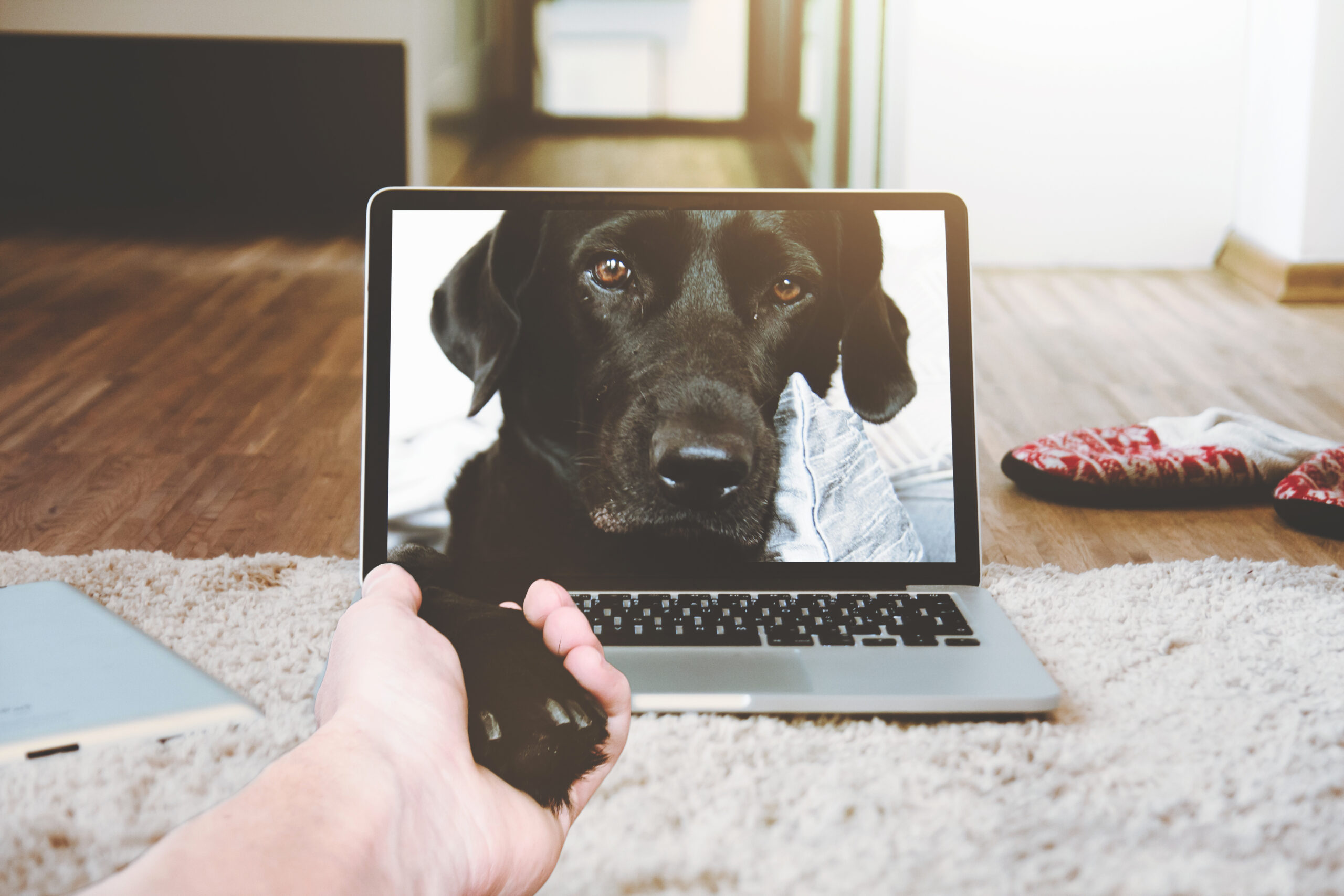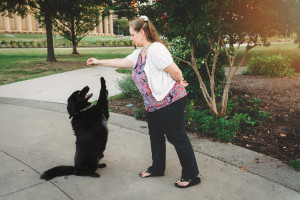Technology is changing many industries and dog training is no exception. While it may seem counterintuitive to not have someone come to your home to train your dog, distance (or remote) dog training can be a very successful, cost-effective and convenient way to get personalized training for you and your dog. It allows you to get the help you need without leaving the comfort of your home and gives you access to quality training that may not otherwise be available in your geographical area. But, it can feel weird to not have someone in person to see your home and your dog and to train the dog. After all, isn’t that what you’re paying for? (Sort of. Read on.)
So, I thought it would be good to review how distance training works.
Distance training has been used successfully for separation anxiety training for quite a while, to help remove any false results by the presence of the trainer. The “trainer effect,” as it’s sometimes called, can cause the dog to behave differently and that’s not helpful when we’re trying to replicate real world scenarios. Remote training removes this obstacle for any issue, since the dog is in their normal environment, with its familiar people, in a low distraction environment. And here’s a little secret, many behavior issues really don’t require a trainer to actually do the training, if the caretaker is willing to do some work. Yes, sometimes it can be more efficient to do something like day training where the trainer does the heavy lifting of teaching the dog. But, in reality, those skills still need to get “transferred” to the owner. A lot of dog training is giving the humans the tools they need to work with, live with and help the dog. I can easily teach/coach someone remotely on what to do when and how to implement the customized management, enrichment and training plans I’ve designed for their dog and their dog’s issues, for about half the cost of an in-person session. You get all the same handouts, knowledge and access as in person clients, but without feeling like you need to clean your house before the trainer arrives!
Through the use of technology(computer or smart phone), we can use free video services like Zoom, Facetime or Skype to do training sessions in real time. If you can click a link or use a phone, you can do remote training! Live video sessions are especially good for basic obedience behaviors, food or resource guarding and body handling cases because I can coach in real time based on my observations. I can point out, and we can discuss, observations like what I’m seeing in terms of body language, and then make the decision when to push the dog to the next step in the plan.
In other cases, like dogs who are afraid of strangers, remote training can actually be better for the dog because we’re not triggering the dog’s fear by having a stranger (the trainer) come into their home. A good trainer doesn’t need to see the dog being fearful or aggressive to help them. I know what resource guarding looks like – I don’t need the dog intentionally pushed over threshold to show me how he growls or tries to bite if he has something he’s afraid of losing.
In cases like stranger danger, I often send clients on missions, like to a park or shopping center parking lot, to work on the training plan at a safe distance and clients will record short video clips of themselves working with their dog (usually with their phone, sometimes with a friend filming or using an inexpensive tripod – no fancy equipment needed) and then send those to me, via text or upload, for review/feedback. This allows me to see the client’s training mechanics, the dog’s normal response and then I can tweak plans as needed or coach the client on what to do to make things more efficient for the next time.
A few months ago one of my distance clients was featured by The Academy For Dog Trainers, my alma mater. Here’s a short video montage they put together about a case I worked on for crate aggression.
As you can see from the video transformation, remote training can be very successful. I’ve successfully helped a wide variety of cases remotely including stranger danger, house training (adults and puppies), crate training/aggression, baby prep, pre-puppy/new dog prep, fear of children, fear of men, resource guarding, leash reactivity, barking and more! Every trainer works a little differently but you can learn more about what to expect, how to prepare for a remote session with me and read some review from remote clients here.
Happy Training! Hope to connect with you soon!
–Kate





